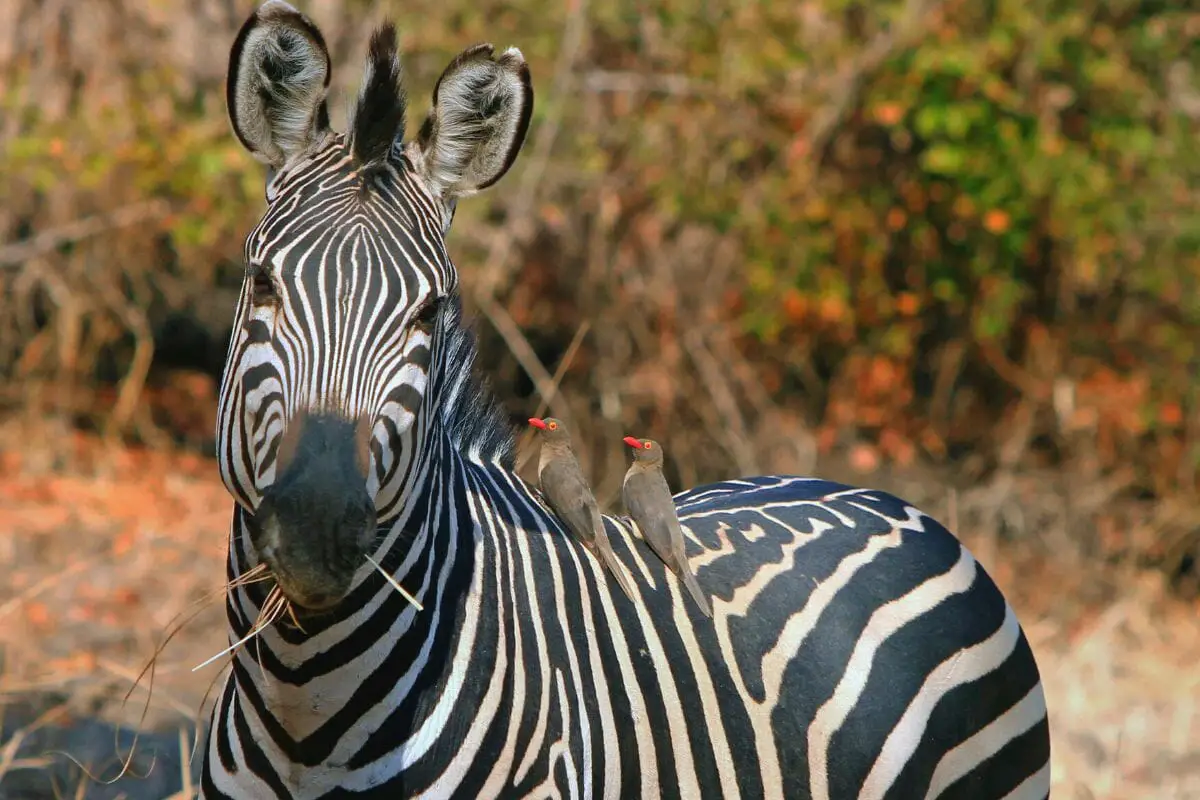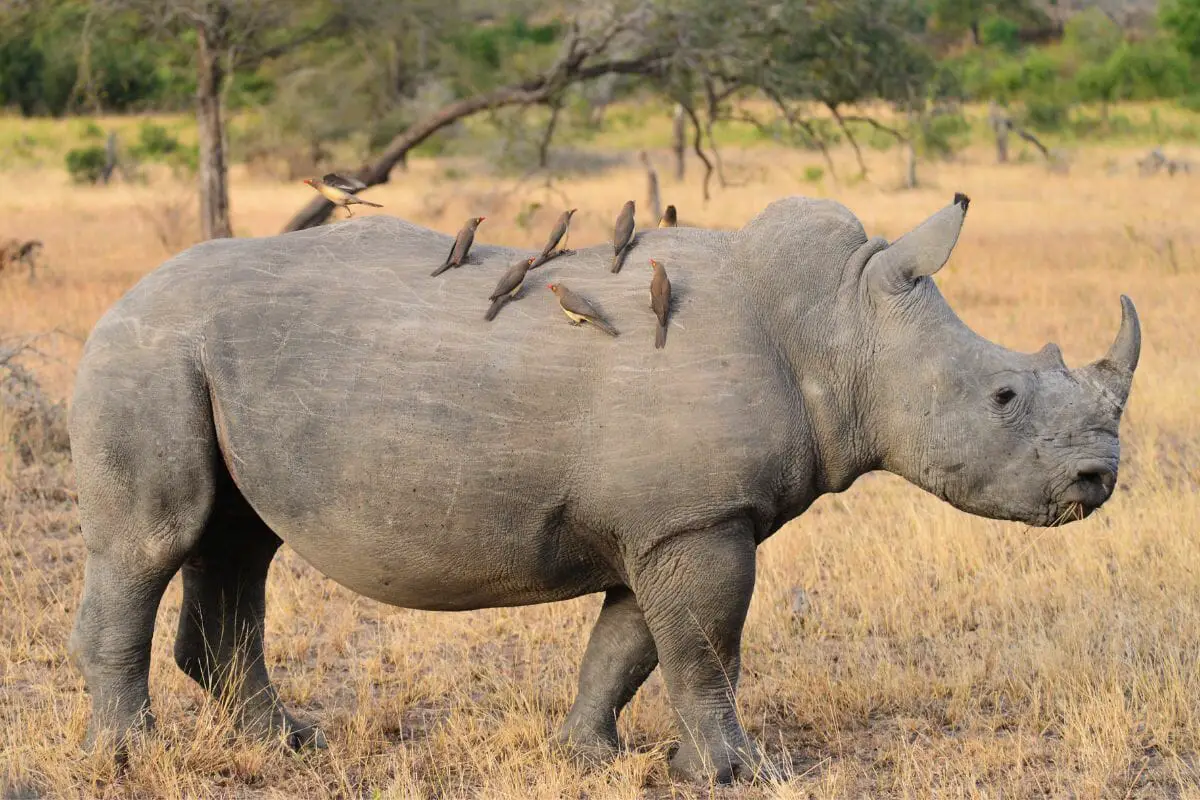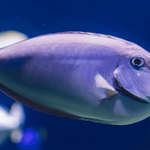Collaboration in nature is an amazing thing to witness. Sometimes, wildly different species will end up relying on each other to benefit their survival, forming close bonds, also known as symbiotic relationships.

There are a few different types of these relationships, such as parasitism, in which one species benefits and the other one is harmed.
Another type of symbiotic relationship is commensalism. In these relationships, one species benefits and the other is neither helped nor harmed.
Finally, the kind of bond that we will be exploring throughout this post is called mutualism. This is a kind of symbiotic relationship where every species involved receives some kind of benefit from the interaction.
Though this bond can be daily complicated, we can approximate it into two different camps.
In one camp are species who are totally dependent on each other and wouldn’t be able to survive without one another (we call this obligate mutualism) and in the other are species who benefit from their relationship but don’t require it to survive (facultative mutualism).
Below we will explore five examples of these mutualistic symbiotic relationships and the different ways that species benefit or rely on one another.
1. Woolly Bats And Pitcher Plants
A pitcher plant is a carnivorous plant that uses nectar around the rim of their mouth-like types to attract small insects and vertebrates.
Because the rim is also slippery, it causes the animals to fall into the digestive substances in what surmounts to the plant’s stomach.
The tube-like structure of the plant makes it practically impossible for the insects to climb back out before they’re digested.
Though the majority of animals would try to avoid a plant like this, there is a species of plant who has found a way to form a symbiotic relationship.
Woolly bats in Borneo are known to roost and find shelter within a tropical species of pitcher plant, known scientifically as Nepenthes Hemsleyana.
This provides a safe place for the bat to rest or sleep where insects are frequently drawn to, all the while providing the plant with guano (feces) that provide the plant with nutrients beneficial to its survival.
Strangely enough, this is not the only example in the world of small mammals finding shelter within carnivorous plants.
Tree Shrews will climb up and feed on another Bornean pitcher plant (Nepenthes Iowii) and feed on the sweet nectar that usually attracts the insects.
As the shrew feeds, it also provides sustenance for the plant in the form of its feces as well.
2. Pistol Shrimps And Gobies
This unlikely duo of marine life consists of Pistol Shrimp and small goby fish. These species have been well studied and documented as benefiting from their facultative mutualism.
The pistol shrimp is a burrower, creating holes in the sea floor that they can live in that they take pride in, and sometimes share with their roommate, a goby.
If they are ever outside of the burrow, these two will stick together, often with the pistol shrimp resting its antennae on the fish in order to maintain a physical connection.
Gobies have significantly better predator detection, and if a potential threat is spotted, it will use chemical cues to signal that they’re in danger and bolt back to the burrow.
Because the shrimp has been laying its antennae on the fish, it is able to pick up on the chemical cue and knows that it needs to return home as well.
Typically, gobies are the look out. They will be the first one to venture outside, and if it deems it safe to leave, the shrimp will follow.
The shrimp will also benefit from the goby not only from their superior predator detection, but also from any parasites living on its body or from any nutrients in the fish’s feces.
3. Oxpeckers And Wildebeests

This technically could be true about Oxpeckers and other large Savannah-grazing mammals such as zebras and rhinos.
Both species of oxpeckers (red-billed and yellow-billed) will spend their time sitting on these animals whilst they graze, and pick off parasites such as flies and ticks.
The birds get an easy meal whilst the mammal’s parasite load is kept under control and healthy.
This is already beneficial for the mammals, however, the oxpeckers have also been known to raise alarms when there is impending danger, such as lions or even humans. This is particularly beneficial for rhinos who have bad long-distance eyesight.
That said, it’s difficult to classify this relationship as perfectly mutualism due to the fact that these birds can cause injury and harm their host, sometimes digging deep wounds into their hides.
The mammals however, don’t seem particularly put off by this behavior, though it certainly doesn’t benefit them.
Similar to this but without the danger of wounds is the water buffalo and the cattle egret.
4. Honeyguides And Humans
Yup, this list also involves symbiotic relationships formed between species and humans. This is particularly interesting in species that we haven’t domesticated.
Honeyguide birds prefer to eat the eggs, larvae, and beeswax that can be found in bee bests. However, they are often not able to break into the beehives on their own, and so a partnership is required.
The human-honeyguide relationship has been documented across multiple different colonies and native tribes, such as the Hadza people in Tanzania.
The honeyguides will use a demanding call that is well-known to mean that they have found a bee hive. Then the humans will reply with a call that has been passed down for generations and follow the bird.
When humans reach the nest, they’re able to disarm the bees, generally using smoke, and break into the nest. Some tribes make up about 10& of their diet from honey and honeycomb thanks to these aptly-named birds.
Once the beads have been taken care of and the humans are satisfied, the honeyguides then get to feast on the remaining beeswax and larvae that have been left behind – beneficial for all involved.
5. Aphids And Ants

An aphid is a tiny insect that consumes sap and secrete a substance known as honeydew. This is a sugary liquid that appeals to a lot of other animals (see also: Animals That Sleep A Lot)and insects, and is a byproduct of the aphids’ sweet diet.
There are a lot of other insects that produce honeydew, though there are few others that form such an interesting mutually beneficial relationship as aphids and ants.
Many aphids are known for establishing these mutualistic relationships with the larger ants by allowing the ants to feed on the honeydew that they create by “milking” the aphids with their antennae.
As compensation for this, some ants will actively protect aphids from predators or from parasites.
There have been documented cases of ants moving aphid eggs or nymphs to the ant nests, almost creating a dairy farm kind of situation.
However, there are some aphids that have evolved to take advantage of this situation.
If ants carry a certain kind of aphid to their brood chamber in order to be milked, these ant-mimicking morphs will drink the body fluid from the ants’ larvae and destroy the eggs.
This puts into question whether this is really a mutualistic relationship, however, everyone comes out having benefitted, except for the ant larvae that got its fluid eaten, of course.
Bottom Line
It’s true that there are a lot of animals who thrive and prefer to live solitary lives, however there are just as many creatures out there that survive or thrive thanks to collaboration and teamwork.
Most of the time, this is in the form of an animal’s pack or flock, however, there are also a bunch of examples of animals from completely different species that are able to work together and form incredible bonds that benefit all parties,
Collaboration and team-building isn’t just for corporate workplaces!
Frequently Asked Questions
Can Animals Make Friends?
Yes, absolutely! We have documented a lot of animals having preferences for one another in a clear sign of friendship, but particularly in mammals with high intelligence.
A lot of the time, these friendships are formed by the same species, such as higher primates, members of the horse family, and elephants.
However, it’s completely possible that some of these mutualistic bonded animals are able to form a sort of friendship as well.
What Forms Of Symbiotic Relationships Are There
There are three basic types of symbiotic relationships:
- Mutualism, where both members of the bond benefit from the interaction without being harmed. This could be ants and aphids, or bats and pitcher plants.
- Commensalism, in which one party benefits from the relationship whilst the other sees no kind of positive or negative effect to themselves.
- Parasitism, where one creature benefits greatly from having a symbiotic relationship but is actively harming the other animal because of it. Generally, this would be a parasite of some kind.
- What Should I Do If A Koala Bites Me? Safety Guide - 2024-05-30
- Are Kangaroos Born Without Hind Legs? A Fascinating Journey - 2024-05-30
- Animals That Look Like Squirrels - 2024-05-30









